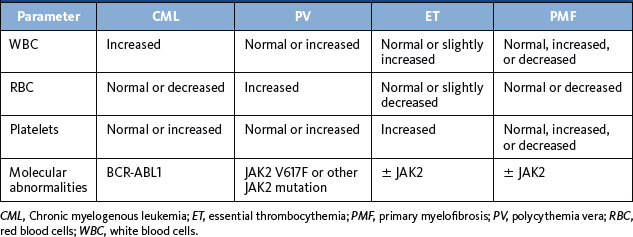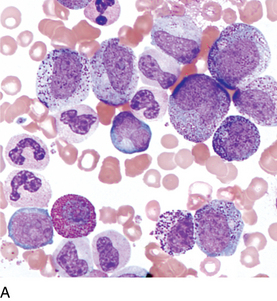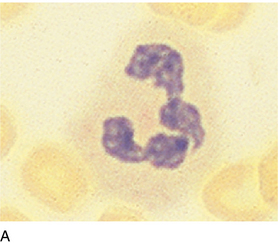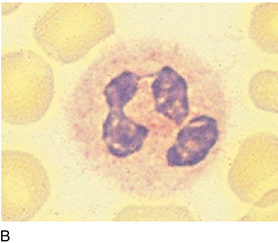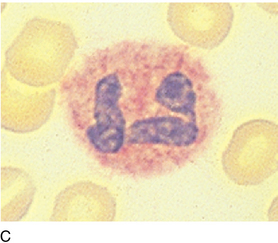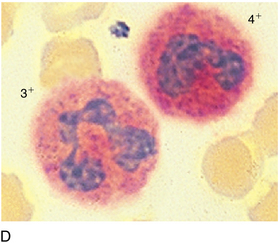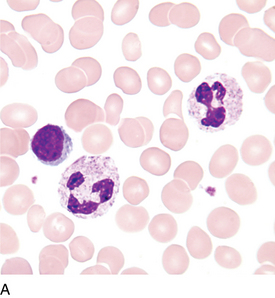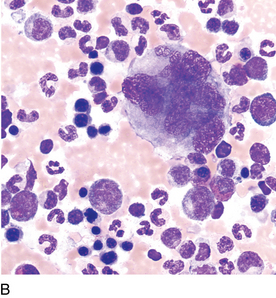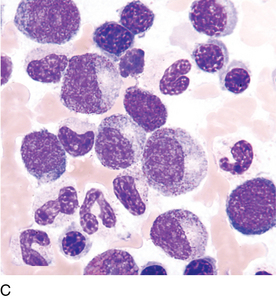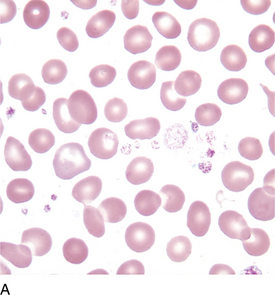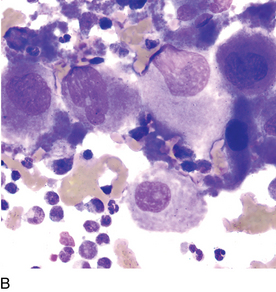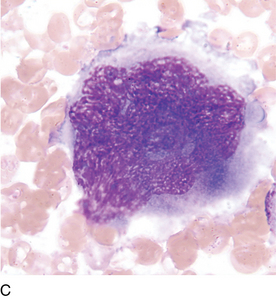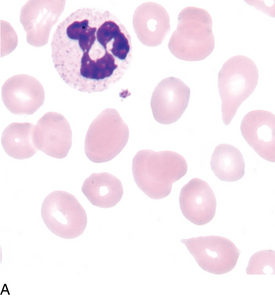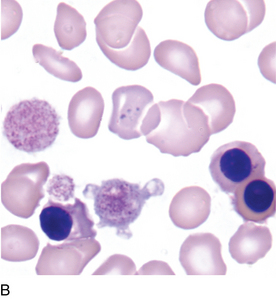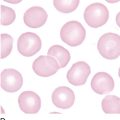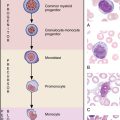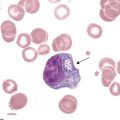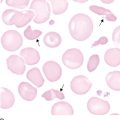17 Myeloproliferative neoplasms
These neoplasms have common clinical features, laboratory findings, and pathogenetic similarities (Table 17-1).
Chronic myelogenous leukemia, BCR-ABL1 positive
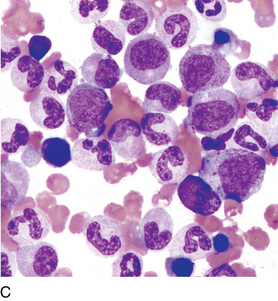
FIGURE 17–1C BM ×500. A spectrum of granulocytes, including multiple myelocytes, bands, and an immature basophil.
Leukocyte alkaline phosphatase
LAP is an enzyme found in secondary granules of neutrophils. LAP activity is scored from 0 to 4+ in the mature segmented neutrophils and bands. One hundred cells are scored and results are added together for the LAP score. A normal score is approximately 20 to 100. Low (<20) scores may be found in untreated CML, paroxysmal nocturnal hemoglobinuria, sideroblastic anemia, and myelodysplastic syndromes. Higher scores may be found in leukemoid reactions (Table 17-2).
TABLE 17-2 Comparison of Chronic Myelogenous Leukemia and Leukemoid Reaction in Peripheral Blood
| CML | Leukemoid Reaction | |
|---|---|---|
| Neutrophils | Increased with immature cells; peaks at myelocyte and segmented neutrophil stages | Increased with immature forms; orderly progression of maturation stages with no peaks |
* Before development of tyrosine kinase inhibitors for treatment, CML would progress through phases, from chronic to accelerated to blast phase, with increasing numbers of blasts, basophils, micromegakaryocytes, and dysplasia. (See a hematology textbook for complete discussion of progression of CML.)

